News |
THE STORY OF THE KHACHATRYAN FAMILY OF NORSHEN
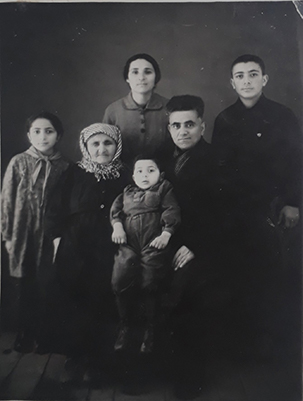 Khachik Khachatryan with his mother Gyozal, his wife Shushanik and three of their children: from left to right - Marietta, Samvel and Robert. On the back of the photo is written:
Khachik Khachatryan with his mother Gyozal, his wife Shushanik and three of their children: from left to right - Marietta, Samvel and Robert. On the back of the photo is written:
"In this picture are our dear children, my mother - suffered.
Khachik:
I wrote this for memory on November 28, 1975.
We were photographed in January 1955."
Khachatryan family archive
My grandfather survived the Armenian Genocide. His name was Khachik Gevorgi Khachatryan and he was born in 1910 in the village of Norshen, located in the Artske-Aljavaz district of the province of Van. His mother, Gyozal Muradi Lputyan (circa 1882-1957) and sister Mariam (Far'è) Gevorgi Khachatryan (1907-1992) also survived. They later told my grandmother Shushik, my uncles, aunt and father about the horrors they lived through.
In spring 1915, my great-grandfather Gevorg was arrested with other men, taken out of the village, and shot dead. His final farewell was to his wife and he said “Gyozal, forgive me ...,” which my uncle Khachik interpreted as a hug or sign of separation. One of the policemen made Gyozal faint by hitting her on her head with a rifle butt and, when she regained consciousness, she found her husband killed with the other men.
After the police left, the local Kurds began a devilish feast, looting, killing and setting everything on fire. Gyozal’s mother-in-law and her little daughter, blond Zardar were among those Armenians who had been put into a barn and burnt. The little girl was hiding with her mother and other children, but when she saw her grandmother approaching, she came out of hiding place and shouted, “Grandma ...!” and ran to her. The criminals drove the child into the barn with her grandmother with the others and set it on fire.
My grandfather’s three brothers, Grigor, Karapet and Yervand all died on the road to exile. Yervand, who was the youngest, died in the first days of deportation and Grigor, who was the eldest of my grandfather’s brothers, was among thousands who died in the typhus epidemic in Holy Etchmiadzin Catherdral’s courtyard. My great aunt Mariam-Far’è told us that Grigor, who was very prudent, tried to suppress his younger brother’s (my grandfather’s) frequent uncontrollable crying on the journey, telling him: “Khcho don’t cry. You have cried so much; our father died. Do you want our mother to die too because of your crying…?”
They took the deportation route from Van to Eastern Armenia, accompanied by Russian soldiers and Armenian volunteers. Khachik and Mariam were the only survivors among the children….
One of Grandma Gyozal’s eyes was damaged during the refuge. Her grandchildren remembered that feature, her kind face, short stature, sweet words, love and care for them. My grandmother Shushik called her mother-in-law a devout Christian. My uncle Robert remembers that their grandmother used to cry for longing and loss of their homeland, saying: “Oh my fruitful Ergir [fatherland]…. If nothing else, we could eat God’s manna and live…”
They first settled in Ptghni and later in one of the houses in the village of Ketran (now Getamej village in the Kotayk region). Their mother sent the children to the Amercom, i.e. the Near East Relief orphanage in Yerevan as she didn’t have the means to feed and take care of them. The orphanage fed and educated them. However, she didn’t take her eyes off them; one day she received news that the orphanage children were going to be transferred to the United States. She made her way from Kertan to Yerevan, crying all the way, thinking she would be late and never see her children again. Eventually she arrived in Yerevan in time and somehow managed to secretly take the children out.
In his childhood my grandfather worked as hired farm laborer and, with a few friends tended the villagers’ lambs on a daily basis. At the end of the year, with the newborn lambs, livestock numbers increased, which served as a means of subsistence for the family, allowing it to save some money to rent a house in Kanaker and for my grandfather to study at Yerevan State University. He graduated with honors from the Agricultural Institute and became the organizer of the Getamej collective farm. He then became the chairman of the joint Yeghlovan and Tazagyugh collective farm villages in the Kotayk region. Later as an agriculturist in the Kanaker sovkhoz, he personally supervised the establishment of the Kanakeravan vineyards using the “Kilchovka” method chosen by himself.
“…This is how my grandfather survived and remained Armenian. He married Shushanik from the famous Akelents family of Kanaker, had 6 children: five sons and a daughter. My grandfather died on 14 February 1982. His body was laid to rest in the Shahumyan Cemetery in Yerevan. Although I never met him, I love my grandfather and I will always do so, because I bear his Khachatryan surname. My father is his son, I love my honest and kind aunts and uncles and my Armenian nation. In him I have an example of struggle and victory.
“Only one relic remains from the deportation and kept in our house today. It is a small leather case containing packages of handwritten medieval hmayils – Christian prayer scrolls - decorated with miniatures and cross-shaped prayers.”
Khachik Khachatryan’s younger granddaughter, AGMI senior researcher Shushan Rafaeli Khachatryan explained that Gyozal, at the end of her life, handed it to my grandmother Shushan and ordered her “to keep it carefully as a sacred object, never to open or take it out of the house, and to light a candle every Saturday…”
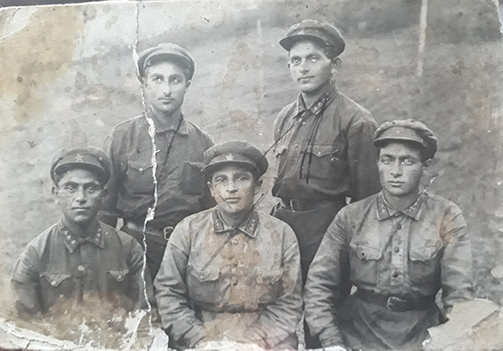 As a Soviet Army officer in charge of a supply battalion, Khachik Khachatryan participated in the defence of the Caucasus during the Great Patriotic War. Then, while transporting a quantity of ammunition, he was subjected to an intense bombardment by the Germans. Most of the supply soldiers there were killed while Khachik Khachatryan was wounded and taken to a hospital in Tbilisi (Georgia). After recovering, he was appointed head of the US Relief Service in Baku, which brought aid from Persia via the Caspian Sea. He served in that capacity until the end of the war. He served in the Soviet Army from June 1941 to 1945. November 4.
As a Soviet Army officer in charge of a supply battalion, Khachik Khachatryan participated in the defence of the Caucasus during the Great Patriotic War. Then, while transporting a quantity of ammunition, he was subjected to an intense bombardment by the Germans. Most of the supply soldiers there were killed while Khachik Khachatryan was wounded and taken to a hospital in Tbilisi (Georgia). After recovering, he was appointed head of the US Relief Service in Baku, which brought aid from Persia via the Caspian Sea. He served in that capacity until the end of the war. He served in the Soviet Army from June 1941 to 1945. November 4.
Khachatryan family archive
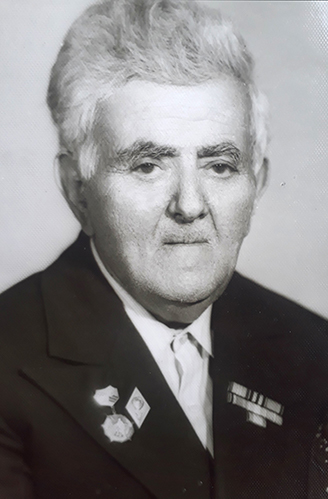 Khachik Khachatryan in 1979, carrying some of the medals awarded to him for his participation in the World War II.
Khachik Khachatryan in 1979, carrying some of the medals awarded to him for his participation in the World War II.
Khachatryan family archive
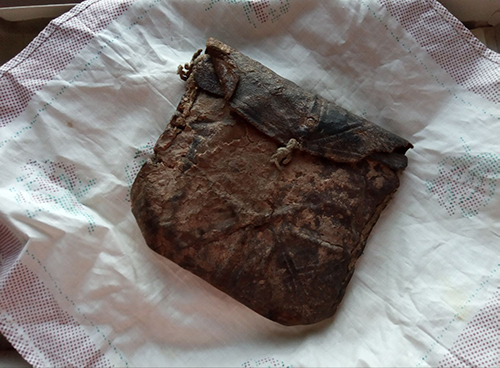 The only relic remains from the deportation and kept in the Khachatryan’s house today is a small leather case containing packages of handwritten medieval hmayils – Christian prayer scrolls - decorated with miniatures and cross-shaped prayers. On the way of refuge, Khachik's mother, Gyozal, gets familiar with a 13–14-year-old sick son of a priest, who was carrying the mentioned prayer scrolls in a leather case. The teenager had been probably warned to take it off before the call of nature, to put it in a separate place, and then to tie it again. And at some point, Gyozal sees the hmayil case left on a stone, and the boy disappeared, probably forgetting to tie it again, at some point in the long journey of the refuge. Gyozal decides to take it, so that if she sees the boy, she will give it to him. But she does not meet him anymore, and keeps the prayer scrolls as a sacred object at house. At the end of her life, she hands it over to her daughter-in-law, Shushik, and orders it to be kept carefully as a relic, not to open or take off of the house and light a candle each Saturday...
The only relic remains from the deportation and kept in the Khachatryan’s house today is a small leather case containing packages of handwritten medieval hmayils – Christian prayer scrolls - decorated with miniatures and cross-shaped prayers. On the way of refuge, Khachik's mother, Gyozal, gets familiar with a 13–14-year-old sick son of a priest, who was carrying the mentioned prayer scrolls in a leather case. The teenager had been probably warned to take it off before the call of nature, to put it in a separate place, and then to tie it again. And at some point, Gyozal sees the hmayil case left on a stone, and the boy disappeared, probably forgetting to tie it again, at some point in the long journey of the refuge. Gyozal decides to take it, so that if she sees the boy, she will give it to him. But she does not meet him anymore, and keeps the prayer scrolls as a sacred object at house. At the end of her life, she hands it over to her daughter-in-law, Shushik, and orders it to be kept carefully as a relic, not to open or take off of the house and light a candle each Saturday...
Khachatryan family archive
|
|
DONATE |
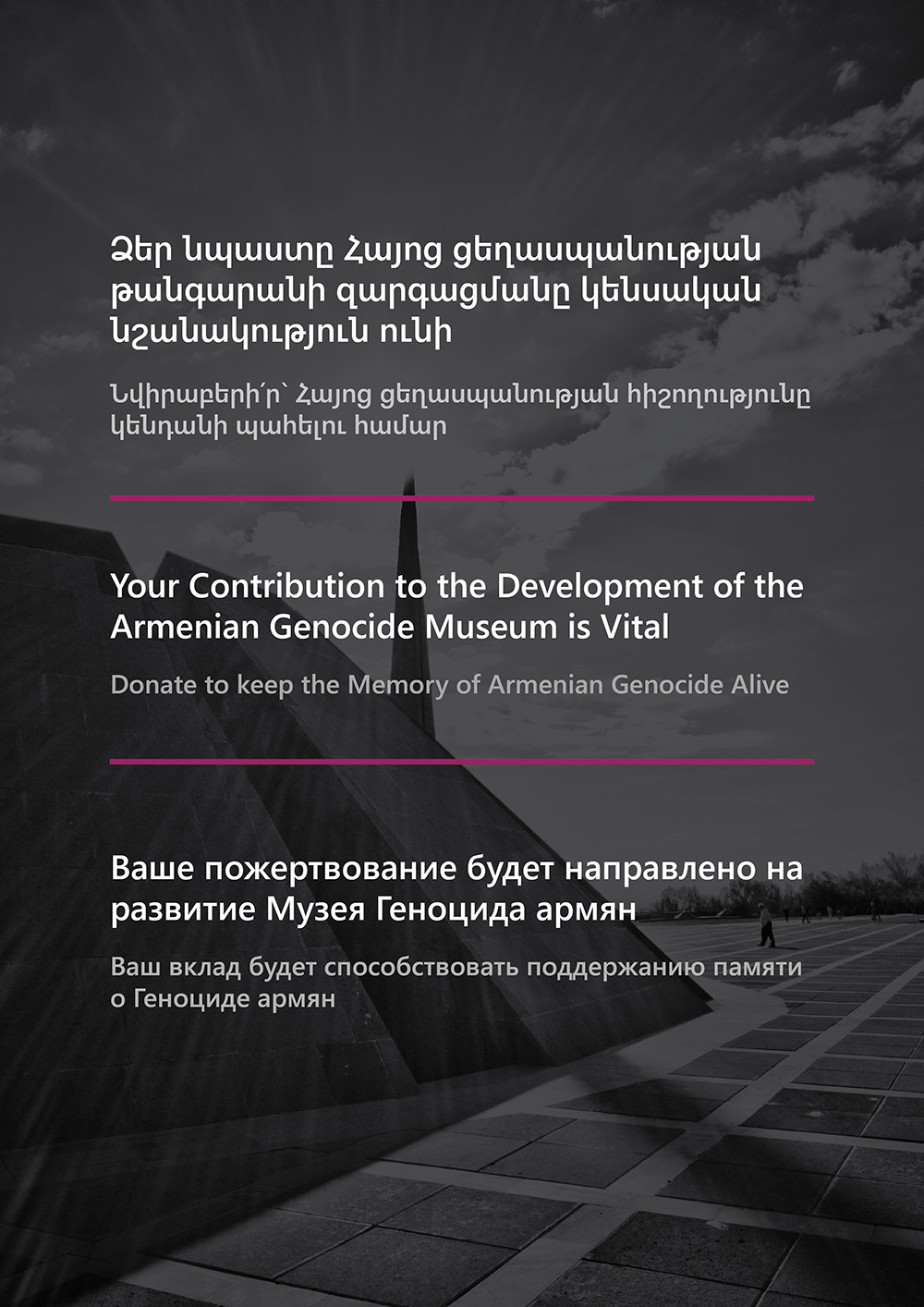
TO KEEP THE MEMORY OF THE ARMENIAN GENOCIDE ALIVE
Special Projects Implemented by the Armenian Genocide Museum-Institute Foundation
|
COPYRIGHT |

|
AGMI BOOKSTORE |
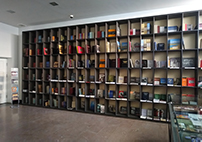
The Armenian Genocide Museum-Institute’s “World of Books”
|
TESTIMONIAL OF ARMENIAN GENOCIDE SURVIVORS |
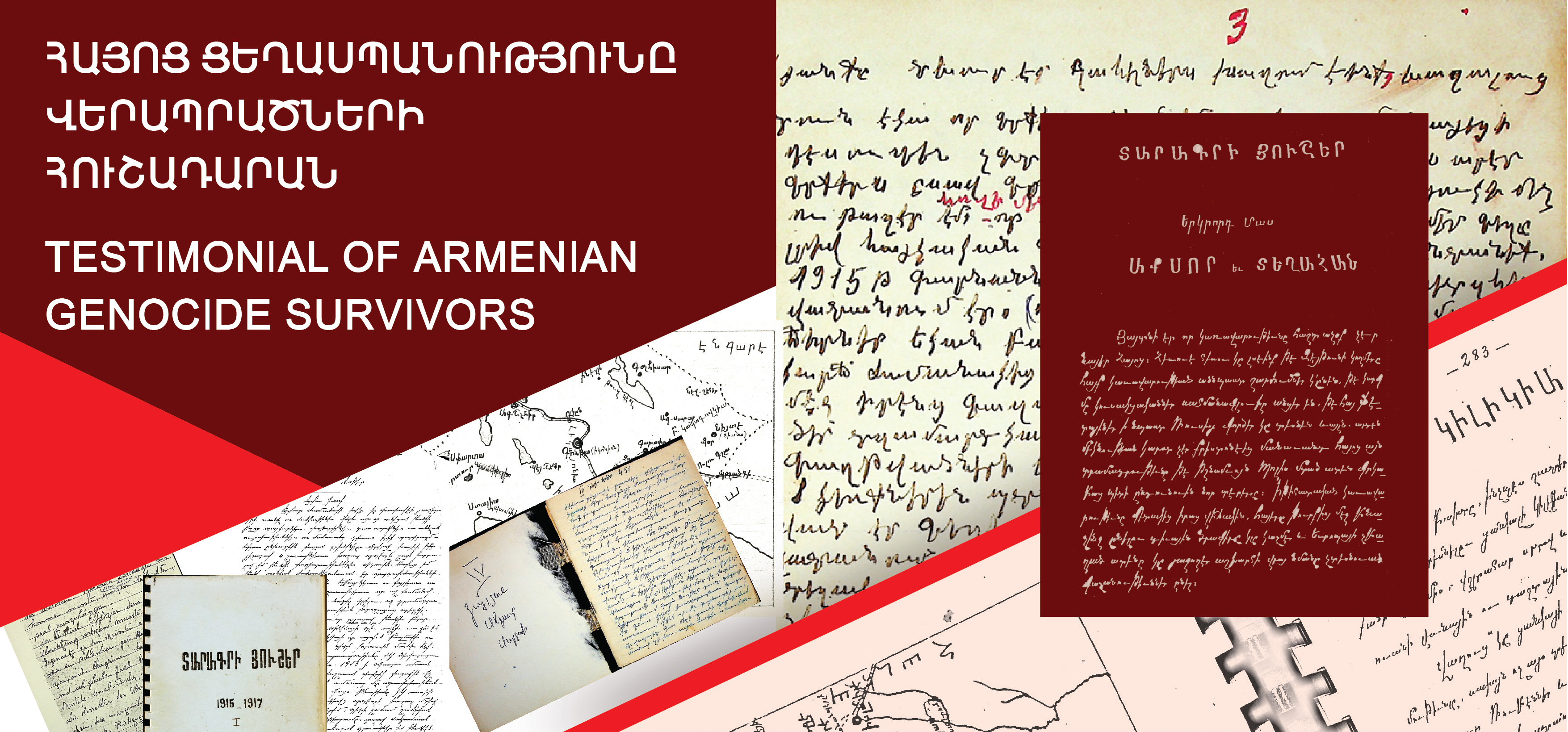
THE AGMI COLLECTION OF UNPUBLISHED MEMOIRS
|
ONLINE EXHIBITION |

SELF-DEFENSE IN CILICIA DURING THE ARMENIAN GENOCIDE
DEDICATED TO THE CENTENNIAL OF THE SELF-DEFENSE BATTLES OF MARASH, HADJIN, AINTAB
|
LEMKIN SCHOLARSHIP |
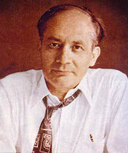
AGMI ANNOUNCES 2024
LEMKIN SCHOLARSHIP FOR FOREIGN STUDENTS
|
TRANSFER YOUR MEMORY |

Share your family story,
Transfer your memory to generations.
On the eve of April 24, the Armenian Genocide Museum-Institute undertakes an initiative “transfer your memory”.
|
|





